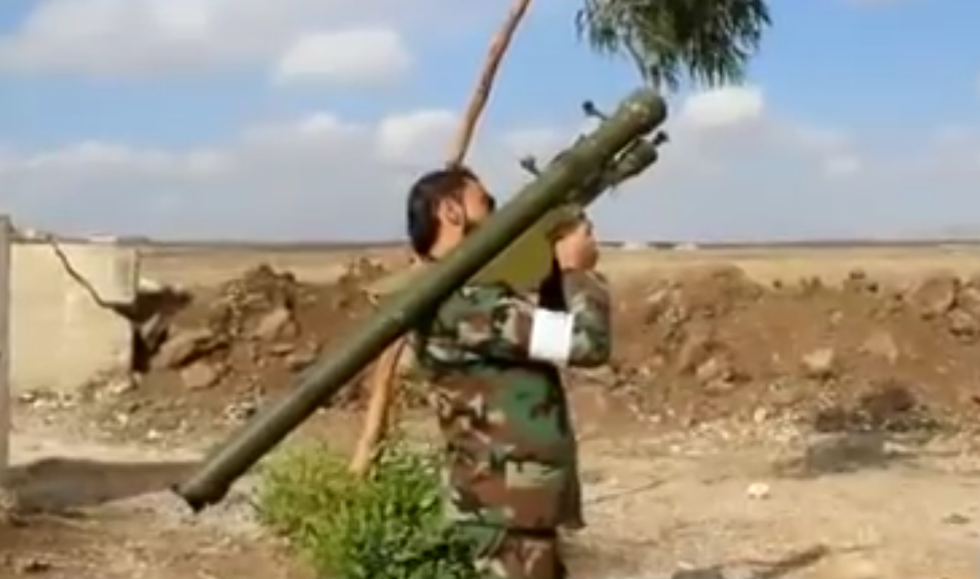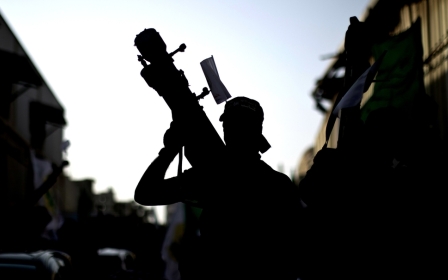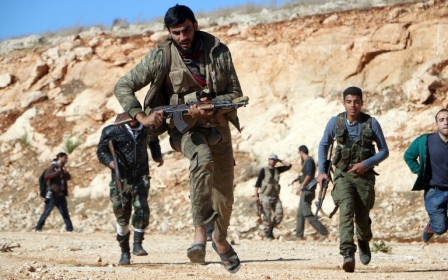Syria war: Rebel group supplied with anti-air missiles

A Syrian rebel group has paraded a cache of shoulder-launched anti-aircraft missiles, the first evidence of the weapons being supplied to opposition forces after an expected relaxing of US restrictions.
Members of the Ansar al-Islam Front were shown in a video posted on 20 November testing SA-7 Strela-2 missiles, although the weapons are not shown being fired.
The group said they had a "good number" of the weapons, which were being deployed among Ansar and Free Syrian Army forces to counter government aircraft in Daraa and Quneitra, to the south of the country.
The first fighter in the video can be heard saying: "We, in Ansar al-Islam Front, have distributed several points of air defence to counter any attempt by the Syrian warplanes or helicopters which bombs points in Quneitra province. We have good number of these missiles."
A second fighter, named as "Abu Bilal" in the video, says: "We, in Ansar al-Islam Front and factions of the FSA, are distributing equipment and soldiers toward Tal al-Hara, Mashara, Sandaniya and Jabata. And in the coming days you will hear good news from Quneitra and its surroundings.
"There are a lot of preparations for ambushes and units deployed on the front lines. There are units of air defence, infantry elements and other several sets of our factions and the factions of the FSA in Quneitra and its surroundings."
The supply of the missiles breaches a standing order from the US to prohibit their distribution in Syria. The US has feared the weapons could fall into the hands of groups such as the Islamic State or the Nusra Front and be used against American forces, their allies and civilian aviation.
However, a high-level rebel source told Middle East Eye in late September that the US was to clear the way for allied nations to begin supplying the weapons, as Russian and Syrian forces increased their attacks on rebel-held areas of the northern city of Aleppo.
"The US confirmed the green light to begin sending them to rebels through supply routes still open through Jordan and Turkey," the source told MEE at the time. "Rebels are being told only to target Syrian helicopters, not Russian - but it's not clear they will abide by this."
The source told Middle East Eye that the US had confirmed it would allow Qatar and Saudi Arabia to begin shipments.
The Reuters news agency at the same time quoted anonymous US officials as saying the assault on Aleppo had "heightened" the possibility of the Obama administration lifting the ban.
However, there is no evidence of the missiles reaching Aleppo, where supply routes have been cut by a siege by Syrian government forces.
The Ansar al-Islam Front is reportedly among dozens of rebel groups that have in the past been supplied with US-made BGM-71 anti-tank missiles, with US approval and through Saudi channels.
It was recently named by the Brookings Institute as one of 76 FSA units that had been "vetted" by the CIA and supplied through military operations command centres in Jordan and/or Turkey.
The SA-7 was designed by the Soviets in the 1960s and was among the first generation of man-portable air defence weapons, known by the acronym "Manpads", although there have been several upgraded variants since.
Middle East Eye propose une couverture et une analyse indépendantes et incomparables du Moyen-Orient, de l’Afrique du Nord et d’autres régions du monde. Pour en savoir plus sur la reprise de ce contenu et les frais qui s’appliquent, veuillez remplir ce formulaire [en anglais]. Pour en savoir plus sur MEE, cliquez ici [en anglais].




